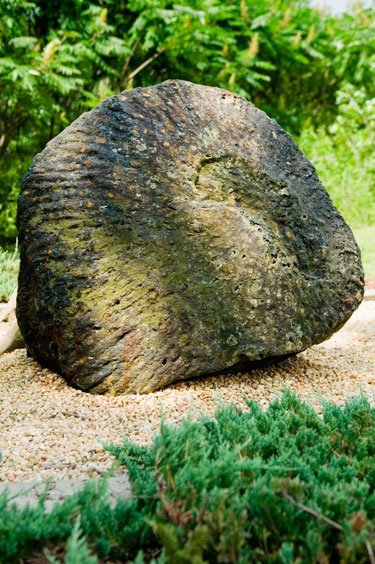
Fossil tree stump, Gilboa, New York.
First, they came for the brachiopods…
In the New Yorker, Peter Brannan finds in Western New York State abundant evidence of Global Warming and planet-wide mass extinction having nothing whatsoever to do with human industrial production or the automobile.
[T]he Hudson Valley roughly marked land’s end, and, by now, I had pushed off this secret coastline to head west, and offshore. The red earth that earlier bracketed the highway—rumors of ancient rivers on land—now gave way to gray, banded rocks filled with seashells, where stacks of seafloor piled up, millennia-thick.
“The farther west you go in New York, it’s all marine fossils,†a paleontologist told me before I left. “New York would have been facing into a great continental sea. All the way out to Ohio, it’s all marine.â€
This upstate ocean poked out from under farmland, and crumbled from rock walls behind gas stations. In the Devonian period—hundreds of millions of years ago—it was filled with sea lilies, sea scorpions, armor-plated monster fish, forests of glass sponges, and patch reefs of strange corals. At night, these reefs were cast in shimmering chiaroscuro, inviting moonlit patrols of sharks and coelacanths. Where the water met land in eastern New York, dawn revealed fish hauling ashore on nervous day trips—slimy, gasping astronauts under a withering sun.
In the ages since, the tropical inland sea drained away, the continents merged and rifted, and the seafloor turned to stone. As fish conquered the land at last, the ocean was buried and forgotten. …
The dramatic change roughly marks the Taghanic Event—a mass extinction that razed corals, brachiopods, and squid-like creatures stuffed in elegant shells all over the world. It was one of almost twenty global mass extinctions in the history of complex life, a list that includes five cataclysmic outliers, when the planet nearly died, and one that might someday include us. …
The great Devonian mass extinction remains something of a mystery. There were oxygen-starved oceans, fueled by an explosion of massive algae blooms—perhaps even driven by runoff from the land, as the emerging world of trees carried out their massive geoengineering project, greening the continents. Other research adds invasive species spread by surging seas, preposterous volcanoes and extreme climate change to the chaos for good measure. Whatever form this destroyer took, it laid waste to 99.99 per cent of the largest reef systems the world has ever known—the so-called “megareefs†of the Devonian, ten times more extensive than our own. Trilobites, tentacled drifters, fish wrapped in heavy armor—nothing was spared.
I still have somewhere boxes full of unprocessed limestone rocks full of Devonian brachiopods I collected back when I was in high school.





steve walsh
My wife’s family, on her father’s side, are from upstate NY, mostly the greater Utica area from Canajoharie through Rome & Hamilton to Syracuse. Early in our relationship we were visiting up there around Columbus Day and went out for a walk and to fly a kite in a field. My father-in-law, being a geologist, started rooting around in the field and came up with all sorts of marine fossils, crinoids, small bivalves, and such. This Boston area boy was bewildered: how in the world did sea creature fossils find their way into the dirt of upstate NY? He explained that it was all under (sea)water at one time.
bob sykes
At one time or another, everything west of the Hudson was sea all the way to the Pacific.
It might be noted that each geological era is marked by a change in fossils, with the implication that at the boundaries of every era are two mass extinction events, some small, some very large.
Please Leave a Comment!